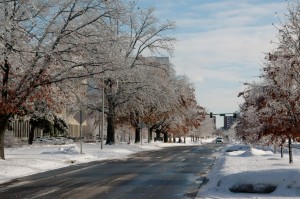Power has been restored to most of the nearly 600,000 people in Michigan that lost electricity during the ice storm that hit last weekend. The storm coated trees with an ice coating an inch thick in many locations, resulting in widespread tree damage. Exceptional events such as this remarkable ice storm provide numerous opportunities to make some observations about trees and how there were impacted by the event. Here are some notes based on observing trees near my home in DeWitt, MI and driving around Lansing, East Lansing, and the MSU campus. Please note these are general trends and impressions. For nearly every item listed I’m sure someone will be happy to point out exceptions.
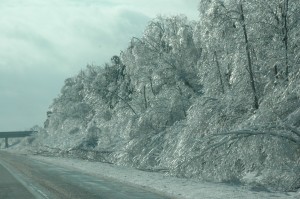
Conifers vs. Deciduous trees. Without a doubt the ice-storm was much harder on deciduous trees than conifers. Elms, maples, oaks, locusts, and birches were all hard hit by the storm. Conifers, for the most part, came through pretty well. The main exceptions were pines, particularly eastern white pine and Scots pine, which received widespread damage. Firs and spruces generally fared well. A big surprise (at least to me) was that there was comparatively little damage to arborvitae, which often end up splayed after heavy snow. In the current storm the ice tended to meld into a solid coating, essentially fusing branches together and reducing splayage.
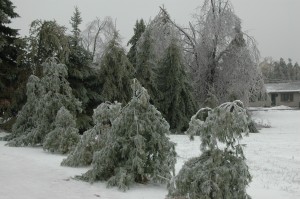
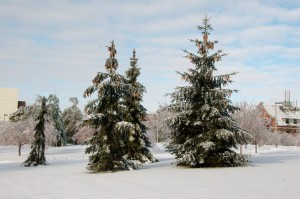
Old vs. Young. Young trees came out relatively unscathed compared to mature trees. In many cases young trees were bent over by the ice but were recovered after the thaw.
The most common damage that occurred on large trees was high crown breakage. One fortunate aspect of the storm is that there was relatively little wind while the trees were coated with ice. As a result, most of the force on braches was downward and the vast majority of the breakage was on smaller limbs (3-4” diameter). Of course there were exceptions to this, but we did not see widespread uprooting of trees or effects of shear forces that usually accompany wind-storms.
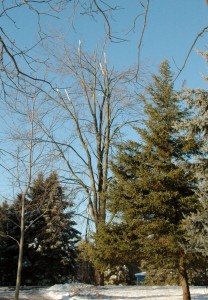
Native vs. Exotic. As one would predict, this one was pretty much a push. Silver maples, which are native to this region were among the most heavily damaged trees. Likewise native eastern white pines and oaks were also widely damaged. Among exotics, Siberian elm and Japanese pagoda tree had extensive breakage.
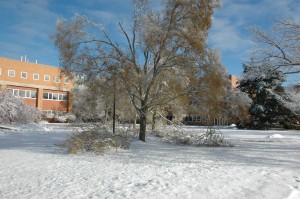

Managed vs. Unmanaged The ice-storm did reveal some cases where regular tree maintenance can pay off. The MSU campus has dozens of English oaks that have been planted over the years. At one point these were thought to be the ‘wonder tree’ that would be perfect for street and landscape planting in the Midwest. And they do have many great attributes; nice form and leaf color, moderate growth rate, tolerance of poor site conditions. Unfortunately they suffer chronic branch mortality due to two-lined chestnut borer. Just a few weeks ago our campus grounds crew came through and did some maintenance pruning on these oaks, removing lots of dead wood from each tree. Since the tree crowns had already been cleaned up, there was almost no breakage in these trees during the storm. One might argue that the net result was the same, whether the arborists took the limbs down or the storm did, but when dealing with trees it’s always preferable to take things out on your terms and timetable rather than the weather’s.
